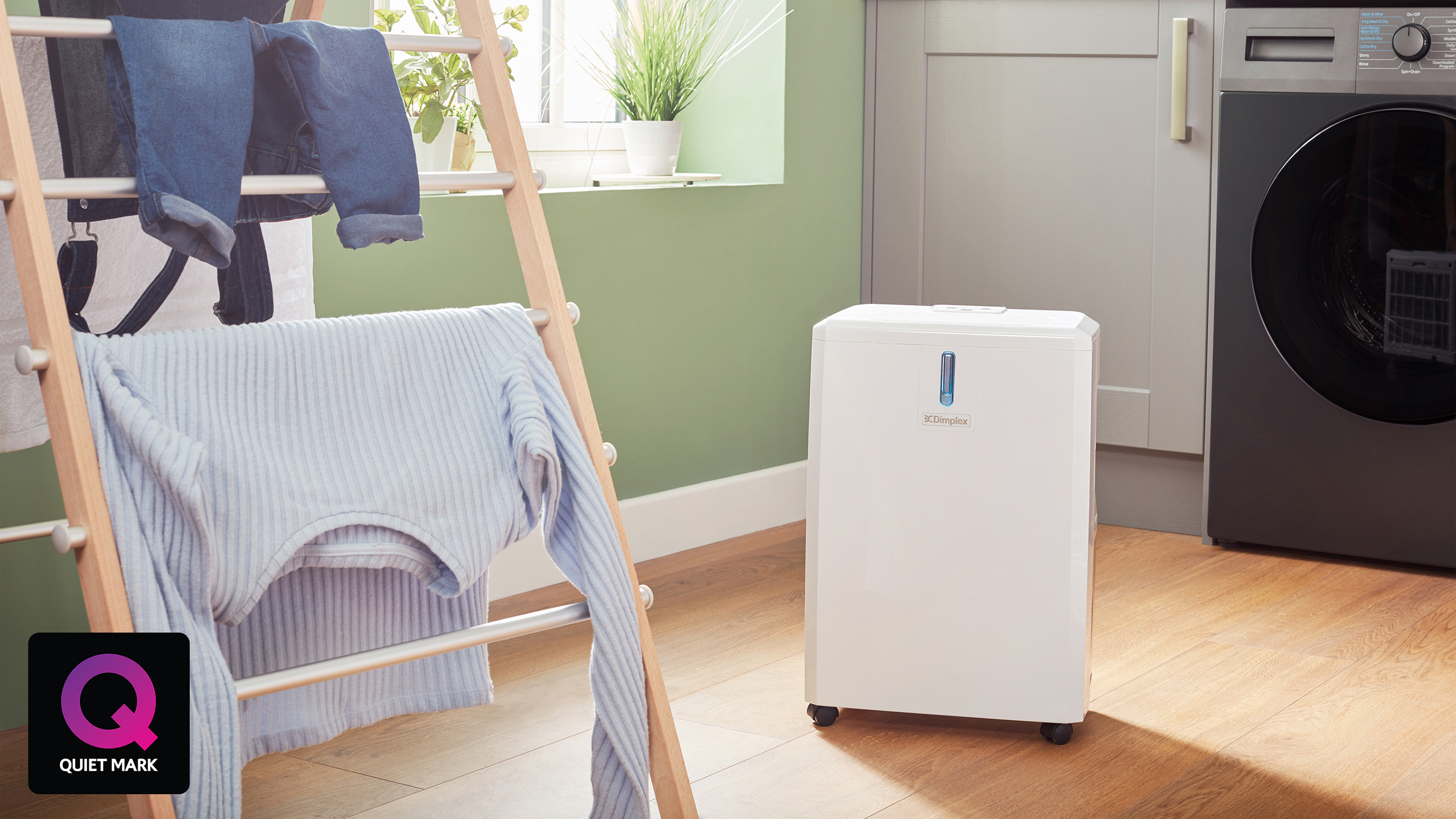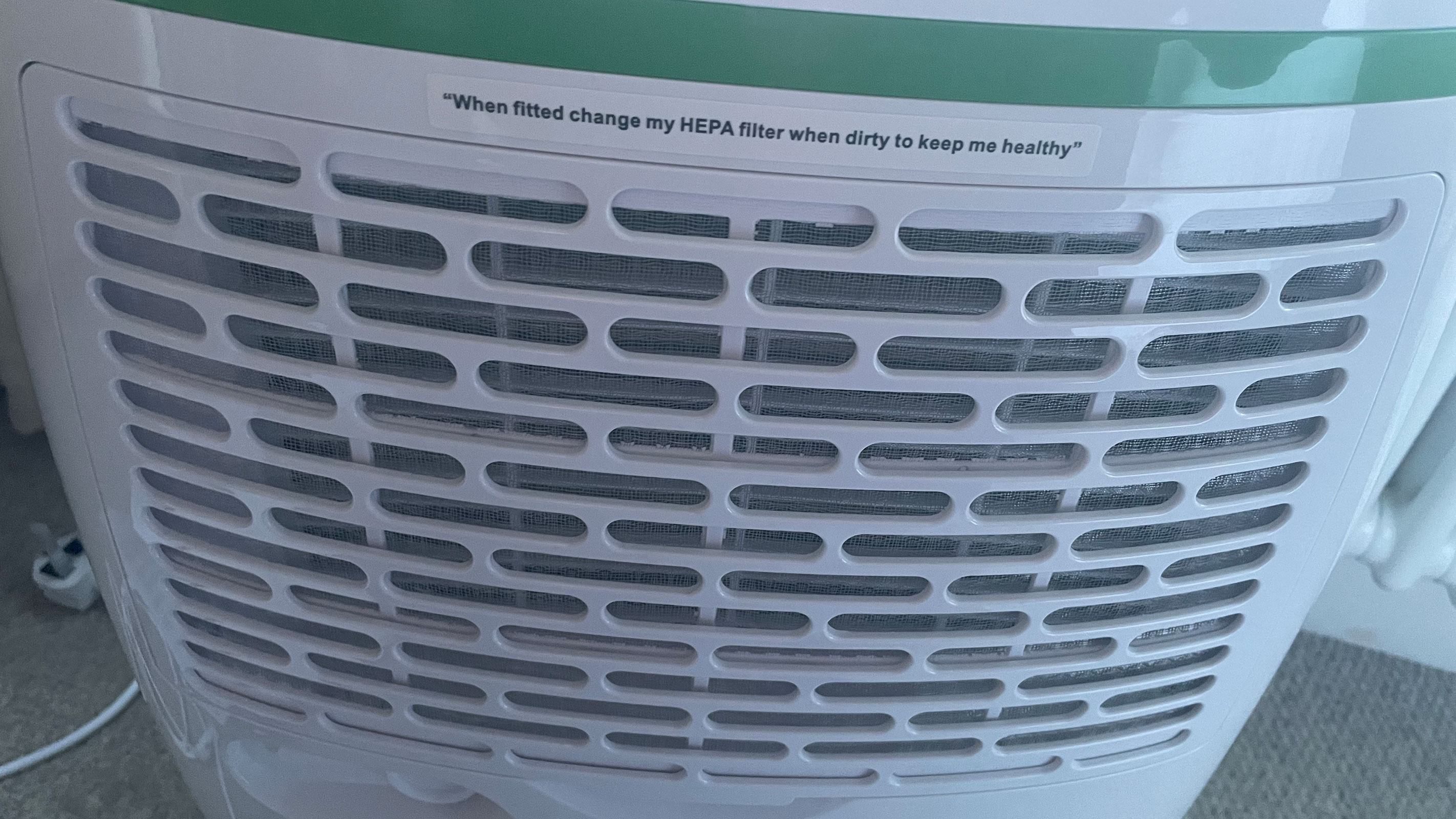Do you do regular dehumidifier maintenance? Our expert explains 4 things you should be doing
Neglecting dehumidifier maintenance could spell trouble for your condensation-busting machine. Make sure you know how to look after yours with our handy guide

With the right dehumidifier maintenance, your purchase can be expected to last you longer and perform better for you — but do you know which jobs you should be focussing on to keep it in good working order?
All of the best dehumidifiers remove excess moisture in the air within the space where they are located. The most common type of dehumidifiers are compressors.
"This type of dehumidifier draws in the air, over a filter and has a cold-coils system, like a fridge," says Chris Michael managing director at Meaco. "They have two sets of coils, the first cools to create the condensation, which is collected into the water tank, the second warms the dry air back to just above room temperature. This helps to create the dry air needed to combat condensation, mould and damp problems."
In this handy guide, we reveal what the experts recommend when it comes to maintenance and pass on their top tips for keeping your dehumidifier in peak condition.
Essential dehumidifier maintenance tips to follow
Getting to know how dehumidifiers work is relatively straightforward, but some regular maintenance is required for them to continue to work at maximum efficiency.
As well as cleaning the filter, other jobs to put on your to-do list from time to time include keeping the water tank clean and dusting off the air grilles when they look like they need it.
"The water tank will benefit from a wipe now and again, but once a season should be fine for that," says Chris. "For the air grilles, a feather duster will be fine for this when you see any dust build up."

Chris Michael is founder and managing director of Meaco and has worked within the air treatment industry for more than 30 years. The company sells its wide range of products in 20+ countries throughout Europe, North America and South Africa.
1. Clean the dehumidifier filter
According to Chris Michael, the main focus of your maintenance should be on the filter within the dehumidifier.
The filter is one of the most important things to take care of in order to keep it running at its best. Regular cleaning should also mean that replacing it will not be required.
"For dehumidifiers that don’t offer HEPA filtration, the air filter is pivotal in extracting dust and other large particles from the air in your home," says Chris. "If the air filter is not properly cleaned it can result in the dehumidifier to stop functioning. The air filter is crucial in protecting the parts inside the dehumidifier and cleaning the dry air in the room. If the air filter is dirty or covered in dust, the dehumidifier will not do its job as the air will not be able to pass through.
"We recommend cleaning the filter every two weeks," suggests Chris. "To clean the air filter, you can carefully vacuum it, or if the suction of the vacuum cleaner is too strong, you can also use a damp cloth and warm soapy water, to gently wipe the dirt away.
"The water should be no hotter than 40°C. Once all the dust has been rinsed off, simply dry the dehumidifier filter with a tea towel before placing it back in the dehumidifier. If the air filter is kept clean it should not need replacing, except for reasons of wear and tear."
2. Replace the HEPA filter regularly
Some dehumidifiers, such as the Meaco 20L Low Energy dehumidifier we've reviewed, come with HEPA filters. A HEPA air filter is made up of thousands of very fine fibres compressed into a mat which can grab both microscopic particles as well as bigger ones.
"In order to maintain fresher, cleaner air in the home we recommend the HEPA filter is replaced roughly every three months," says Chris. "The HEPA filter provides enhanced air cleaning capabilities, turning your dehumidifier into a combined dehumidifier and air purifier. The HEPA is used in addition to the dust filter that comes as standard in dehumidifiers, so that you can get two stages of filtration. The old HEPA filter should be disposed of."

3. Store your dehumidifier correctly
You probably won't need your dehumidifier to be up and running all year round — but what is the best way of ensuring it is stored safely and ready for when the time does come around to get it out again?
"If you are going to stop using your dehumidifier for any length of time, then we would recommend running it on AP mode (air purification mode) for several hours first," says Chris. "This mode runs the machine on fan only and this will help to dry out the cooling coils before putting it into storage. This will reduce the chances of any mould build up inside the machine while it is not being used. AP mode, incidentally, is available on the Meaco Arete and Low Energy ranges."
4. Choose the best location for it
While dehumidifier maintenance is not too time consuming or difficult to carry out, using your machine properly and locating it wisely can help with the performance and overall running of your dehumidifier.
"You should place your dehumidifier where it is most needed, but remember that a compressor dehumidifier should never be used in a space smaller than 4m² and electrical appliances should not be used in the bathroom for safety reasons," advises Chris.
FAQs
How long do dehumidifiers last?
While this will very much depend on the quality of the model you buy and how well you look after it, the majority of experts tend to agree that you can expect dehumidifiers to last between five to ten years.
Another factor that will affect the longevity of your dehumidifier is how often you use it. Take care to store it away safely too when it is not in use to prolong its life.
While keeping your dehumidifier in good running order should not be too time consuming, if you want it to last as long as possible, it is wise to keep your eye on its upkeep.
Concentrate any maintenance efforts on the filter and ensure HEPA filters are changed regularly.
Other than cleaning filters and keeping air grilles free of dust, these handy machines are a fuss-free way of keeping moisture levels under control, plus dehumidifiers can help to dry clothes too, making them a practical buy for any home.
Get the Homebuilding & Renovating Newsletter
Bring your dream home to life with expert advice, how to guides and design inspiration. Sign up for our newsletter and get two free tickets to a Homebuilding & Renovating Show near you.
Natasha was Homebuilding & Renovating’s Associate Content Editor and was a member of the Homebuilding team for over two decades. In her role on Homebuilding & Renovating she imparted her knowledge on a wide range of renovation topics, from window condensation to renovating bathrooms, to removing walls and adding an extension. She continues to write for Homebuilding on these topics, and more. An experienced journalist and renovation expert, she also writes for a number of other homes titles, including Homes & Gardens and Ideal Homes. Over the years Natasha has renovated and carried out a side extension to a Victorian terrace. She is currently living in the rural Edwardian cottage she renovated and extended on a largely DIY basis, living on site for the duration of the project.

